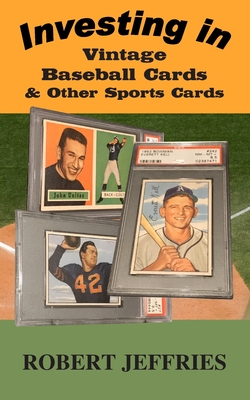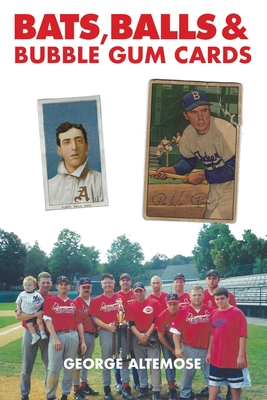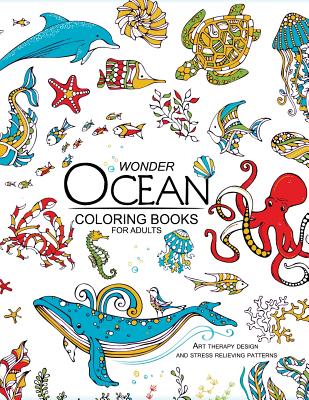





Become a part of the growing sports card trading community
Sports Card Collecting & Investing For Dummies will teach you how to start or resume collecting, how to trade, sell, grade, and protect your cards. This is a comprehensive yet easy-to-read breakdown of the sports card hobby and its many nuances. You'll learn the basics and get up to speed on the recent influx of new brands, companies, investors, influencers, and technologies that have completely reshaped the community. The popularity of sports cards as an alternative investment is at an all-time high, and this Dummies guide helps you budget and make smart trades. The anatomy of a sports card, spotting card damage, grading scales, buying safely, using trusted marketplaces, building your collection, pricing and selling your cards, avoiding scams--it's all in here. Become a savvy card collector, the easy way.
Beginners of all ages who want to start (or resume) collecting sports cards can find all the must-know info in the pages of Sports Card Collecting & Investing For Dummies.


Only a few dozen T206 Wagners are known to still exist, having been released in limited numbers just after the turn of the twentieth century. Most, with their creases and stains, look like they've been around for nearly one hundred years. But one--The Card--appears to have defied the travails of time. Its sharp corners and still-crisp portrait make it the single-most famous--and most desired--baseball card on the planet, valued today at more than two million dollars. It has transformed a simple hobby into a billion-dollar industry that is at times as lawless as the Wild West. Everything about The Card, which has made men wealthy as well as poisoned lifelong relationships, is fraught with controversy--from its uncertain origins to the nagging possibility that it might not be exactly as it seems.
In this intriguing, eye-opening, and groundbreaking look at a uniquely American obsession, award-winning investigative reporters Michael O'Keeffe and Teri Thompson follow The Card's trail from a Florida flea market to the hands of the world's most prominent collectors. The Card sheds a fascinating new light on a world of counterfeiters, con men, and the people who profit from what used to be a pastime for kids.

Thomas Edison was a long-time baseball fan. In his younger years, he once proclaimed, he could have named the players on the roster of every major league team, and even later he followed the press accounts of each day's games. It was an interest he seems to have passed on to his youngest son, Theodore, known to many as Ted.
In the summer of 1909, Ted, age eleven, began to collect baseball cards which he kept in a ratty old wallet. These were not just any baseball cards. Over the following months, Ted Edison collected sixty-one cards, featuring fifty-eight players, from the now much-prized T206 series published and distributed in packs of cigarettes from the American Tobacco Company. His collection included nine players who would, beginning some thirty years later, appear on plaques in the National Baseball Hall of Fame. Ty Cobb. Christy Mathewson. Walter Johnson. Frank Chance. He had them all, and more.
When Ted passed away in the 1990s, his family donated many of his personal effects, his personal papers, his archive of Edison Company corporate papers, and more to the Thomas Edison National Historical Park. Included in the donation was a well-worn old wallet dating to 1909, complete with Ted's collection of T206 cards. He had held onto those cards for more than eight decades.
The authors came across the cards while doing archival research on Edison and baseball. This book is their effort to share with readers both the cards themselves and the story surrounding them.




What are the three main types of scarcity, and why do only two of them matter? What is the difference between organic and design scarcity, and which one is more desirable? Why is the 1962 Topps Willie Mays card graded PSA-8 more than twice as valuable as the 1960 Topps Willie Mays card graded PSA-8.5? What is the most undervalued vintage football set? Why is the 1968 Topps Mickey Mantle card graded PSA-10 a steal at $45,000? Why do football cards offer better percentage growth prospects than baseball cards? Why are PSA-8.5 cards so often undervalued?
Whether you have thousands to spend or just a few hundred, this Primer will help you better understand the benefits and risks of investing in vintage baseball and football cards.
Author Robert Jeffries is a long-time collector of vintage baseball and football cards. Contact him at robert.jeffries.writer@gmail.com.

Baseball fans of all persuasions will enjoy this book as much as a good hitter likes a fastball down the middle. For those who have played the game as amateurs, there are great stories by author George Altemose of playing in the first days of the Mens Senior Baseball League (MSBL), the Stan Musial League, and the Roy Hobbs League, with tournaments all over the country in fields in Cooperstown, Phoenix, Las Vegas, Boston, Chicago, and Florida.
George's opponents in these games included major leaguers Rico Carty, Ron Santo, Ernie Banks, Billy Williams, Phil The Vulture Regan, and Oil Can Boyd, and his teammates included Dante Bichette and Rusty Meacham. There are fascinating encounters with a number of legendary baseball figures, including Leo Durocher, Charlie Grimm, Specs Toporcer, Tom Seaver, and authors Jack Kerouac and Lawrence Ritter. But the main players in the stories are the ordinary players, those who were not destined to play professionally, but who played single games on Saturday and doubleheaders on Sunday, simply because they loved to play.
To pass the time during cold winters and rainy afternoons, George also collected baseball cards and other memorabilia, including bubble gum cards from the 1950s and 1960s and tobacco cards from the T205 and T206 series of 1909 to 1911. Stories of how these cards were acquired, as well as a brief but interesting history of baseball cards over the years from the late 1800s to the present day, will bring a smile to the face of anyone whose mother threw out his cards while he was still in high school. Whether baseball is played at the highest levels, such as we see at Yankee Stadium, Fenway Park or Wrigley Field, or down at the sandlot level on a poorly maintained junior high school field, it is still the same game. Nowhere is this shown more clearly than in this great story of baseball and those who love it.


AMAZON BEST SELLER BEST GIFT IDEAS
This incredible adult coloring book by best-selling artist is the perfect way to relieve stress and aid relaxation while enjoying beautiful and highly detailed images. Each coloring page will transport you into a world of your own while your responsibilities will seem to fade away...
Use Any of Your Favorite Tools
Including colored pencils, pens, and fine-tipped markers.
One Image Per Page
Each image is printed on black-backed pages to prevent bleed-through.
Display Your Artwork
You can display your artwork with a standard 8.5 x 11 frame.
Two Copies of Every Image
Enjoy coloring your favorite images a second time, color with a friend, or have an extra copy in case you make a mistake.
As a special bonus, you can download a PDF and print your favorite images to as many times as you want.
Now on Sale
Regular Price: $9.99 SAVE $6.99, 60% OFF Limited time only.
Makes the Perfect Gift
Surprise that special someone in your life and make them smile. Buy two copies and enjoy coloring together.
Scroll to the top of the page and click the buy button.



In Obeah, Race and Racism, Eugenia O'Neal vividly discusses the tradition of African magic and witchcraft, traces its voyage across the Atlantic and its subsequent evolution on the plantations of the New World, and provides a detailed map of how English writers, poets and dramatists interpreted it for English audiences. The triangular trade in guns and baubles, enslaved Africans and gold, sugar and cotton was mirrored by a similar intellectual trade borne in the reports, accounts and stories that fed the perceptions and prejudices of everyone involved in the slave trade and no subject was more fascinating and disconcerting to Europeans than the religious beliefs of the people they had enslaved. Indeed, African magic made its own triangular voyage; starting from Africa, Obeah crossed the Atlantic to the Caribbean, then journeyed back across the ocean, in the form of traveller's narratives and plantation reports, to Great Britain where it was incorporated into the plots of scores of books and stories which went on to shape and form the world view of explorers and colonial officials in Britain's far-flung empire.
O'Neal examines what British writers knew or thought they knew about Obeah and discusses how their perceptions of black people were shaped by their perceptions of Obeah. Translated or interpreted by racist writers as a devil-worshipping religion, Obeah came to symbolize the brutality, savagery and superstition in which blacks were thought to be immured by their very race. For many writers, black belief in Obeah proved black inferiority and justified both slavery and white colonial domination.
The English reading public became generally convinced that Obeah was evil and that blacks were, at worst, devil worshippers or, at best, extremely stupid and credulous. And because books and stories on Obeah continued to promulgate either of the two prevailing perspectives, and sometimes both together until at least the 1950s, theories of black inferiority continue to hold sway in Great Britain today.


